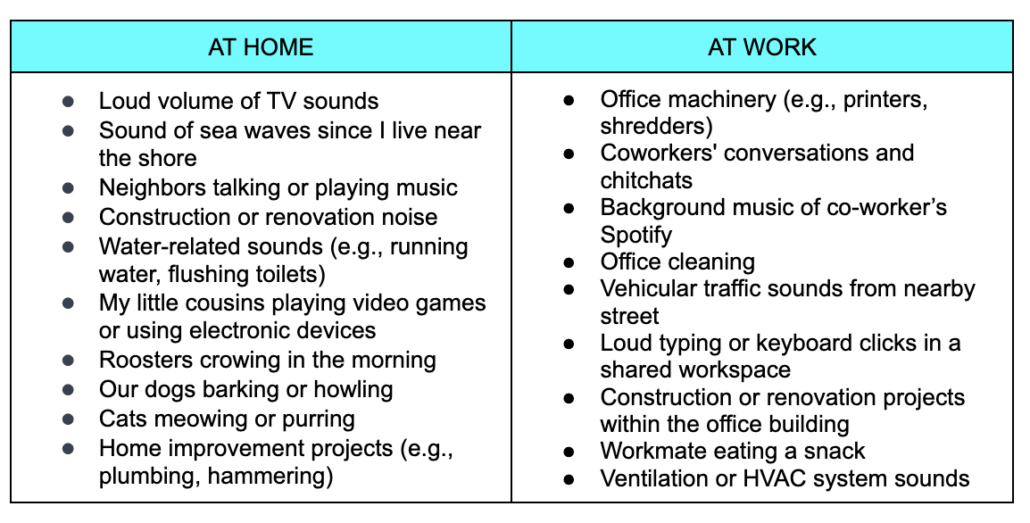Module 7. Barriers to Effective Communication Objectives
OBJECTIVES:
By the end of this module, you should be able to:
- explain why a communicator must understand the different barriers to effective communication;
- list the physical, psychological-cultural, and social barriers to effective communication;
- define competent communication;
- cite examples of how a competent communicator can overcome; and the various barriers to effective communication
ACTIVITY 7
Read Chapter 7 of your text.
Make a list of the noise that you must deal with every day at home and at work. Take a quick walk around your office or work to help you decide how you will answer. AFTER YOU HAVE MADE YOUR LIST, continue with the module.
Comments. How was your foray into the world of noise? Let me guess the items you have on your list: ringing telephones; vehicle sounds; loud TV or radio; shouting/laughing people; rooms that are too hot or too cold; crying children; regionalism; stereotyping; negative attitudes; alerts, notifications, ring tones, inbox, etc.
You probably have entries on your list that I never even considered. Why? Well, perhaps the things that you do, and I consider noise are different. For example, if I were waiting for a long-distance phone call, the ringing of the phone would not be noise to me. Instead, it would be a signal for me that communication with someone important is about to begin. But for you and your team brainstorming for an important communication campaign, the ringing phone would be disruptive. For you, the ringing phone would be noise. Some communicators would say that the items on my list all contribute to a breakdown in communication. In other words, because of these or because of noise, the message cannot be delivered properly.
ANSWERS:

NOTES:
Chapter 7 discusses barriers to effective communication. Here’s a summary:
- Barriers to effective communication can distort or hinder the clarity of messages.
- The chapter aims to review these barriers to help us respond effectively when facing them.
- Objectives of the chapter include understanding various barriers, listing physical, psychological-cultural, and social barriers, defining competent communication, and providing examples of overcoming barriers.
Key Concepts and Models:
- Effective communication involves achieving the desired effect in terms of attention, understanding, acceptance, or action.
- The communication process involves various factors, including the source, message, channel, receiver, and available resources.
- Noise in communication refers to any interference or distortion that affects the message’s fidelity.
- Communication barriers can be classified into physical, psychological-cultural, and social barriers.
Types of Communication Barriers:
- Physical barriers include environmental factors, channel noise, and technical issues like static on the radio.
- Psychological-cultural barriers encompass semantic noise, stereotypes, ethnocentrism, and first impressions.
- Social barriers involve issues like wealth-related discrimination, negative past experiences, and resistance to change.
Communication Competence:
- Competent communicators have a “We-not-Me” orientation, understanding of communication effectiveness, and a sense of appropriateness.
- Competence is based on knowledge, skills, sensitivity, and values.
- Effective listening is essential for overcoming barriers, but many people struggle with various listening barriers.
Barriers to Effective Listening:
- Listening barriers include assumptions about the message’s importance, mental criticism of the source, opposition without understanding, focus on factual data, excessive note-taking, pretending to listen, failure to request clarification, sensitivity to certain words, wandering thoughts, and tuning out technical content.
Remedies for Effective Listening:
- Remedies for these listening barriers include giving the source initial attention, avoiding excessive criticism, listening for principles, remaining flexible in note-taking, being an active listener, seeking clarification, ignoring personal biases, and capitalizing on thought speed.



